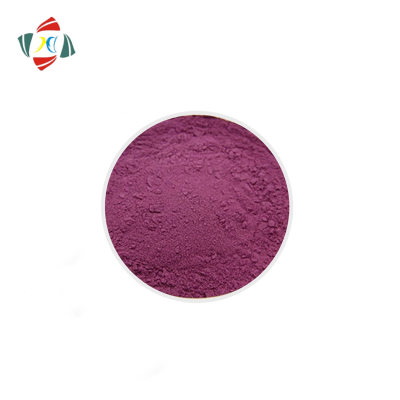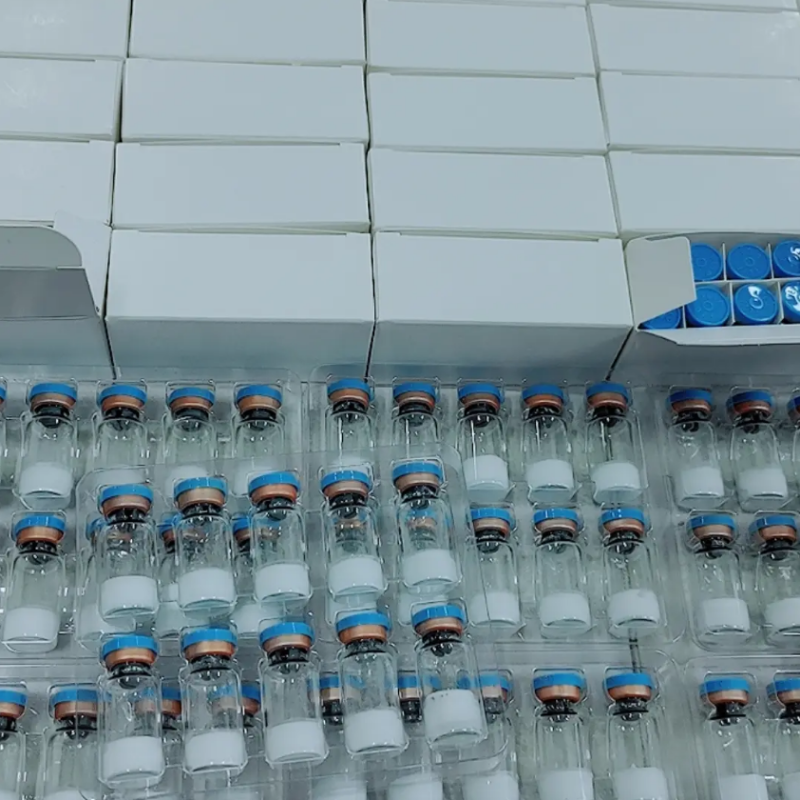-
Categories
-
Pharmaceutical Intermediates
-
Active Pharmaceutical Ingredients
-
Food Additives
- Industrial Coatings
- Agrochemicals
- Dyes and Pigments
- Surfactant
- Flavors and Fragrances
- Chemical Reagents
- Catalyst and Auxiliary
- Natural Products
- Inorganic Chemistry
-
Organic Chemistry
-
Biochemical Engineering
- Analytical Chemistry
- Cosmetic Ingredient
-
Pharmaceutical Intermediates
Promotion
ECHEMI Mall
Wholesale
Weekly Price
Exhibition
News
-
Trade Service
It is only for medical professionals to read.
What are the diagnostic conditions for newborns with lupus? Last week, Xiaojie introduced to you the pregnancy of patients with systemic erythema (Part 1).
This week Xiaojie will take you to continue learning the management of lupus pregnancy from two aspects: the use of pregnancy and lactation drugs and the treatment of neonatal lupus.
1.
The use of drugs during pregnancy and lactation SLE women must take drugs to control the condition.
However, "the drug is three-part poison", the drug may cause teratogenic and other serious adverse reactions to the fetus, so there is a subtle difference between the medication and pregnancy.
Balance is essential.
The principles of medication for women with SLE during pregnancy include: stop any teratogenic drugs; pregnancy should be in a stable state and use the least drugs.
However, in practice, patients often become pregnant during their illness.
Once they are known to be pregnant, they should stop using banned drugs and switch to safe drugs, including hydroxychloroquine, fluoride-free hormones, and azathioprine.
Drug options for patients with SLE during pregnancy: (1) Hydroxychloroquine: no teratogenicity, and stopping hydroxychloroquine during pregnancy may increase the risk of SLE disease activity.
Therefore, hydroxychloroquine is beneficial to both the fetus and pregnant women.
Experts recommend continuing to use hydroxychloroquine during pregnancy.
.
(2) Immunosuppressive agents: Cyclophosphamide is forbidden and the washout period is 3 to 6 months; methotrexate/leflunomide is forbidden, and the washout period for methotrexate is 3 months, and the washout period for leflunomide is 6 months.
Or 24 months (can be antagonized by cholestyramine); mycophenolate mofetil is forbidden, and the washout period is 6 months; cyclosporine, tacrolimus, azathioprine, and sulfasalazine are safer and can be used.
(3) Hormones: It is best to use the smallest amount of hormones during pregnancy <20mg/d.
Hormones are mostly inactivated in the placenta and rarely act on the fetus, but they may increase the risk of maternal diabetes, high blood pressure, premature rupture of membranes, and cleft palate in newborns.
(4) Medication when combined with antiphospholipid antibody syndrome: aspirin combined with low molecular weight heparin.
Figure: SLE combined with antiphospholipid antibody syndrome medication method 2.
Neonatal lupus treatment Neonatal lupus (NLS) is mainly related to maternal anti-SSA and SSB antibodies, and the incidence rate abroad is 1/12500~1/20000.
The skin, heart, liver, and blood are mainly affected, and multiple systems are rarely involved, and the systemic symptoms are mild.
The diagnosis can be confirmed by meeting one of the following criteria: neonatal congenital heart block and neonatal or mother's anti-SSA, anti-SSB antibody positive.
The skin lesions associated with neonatal lupus and the neonatal or mother’s anti-SSA, anti-SSB, or anti-RNP antibodies are positive as determined by histopathology and dermatologists.
The clinical manifestations of neonatal lupus have the following aspects: (1) Skin manifestations: periorbital fusion, scaly rash-"owl eyes" or "raccoon eyes", which are more likely to occur in exposed areas such as the head and face.
Figure: NLE skin manifestations (2) Heart manifestations: Mainly manifested as congenital heart block (CHB), which may include cardiomyopathy, myocarditis, and structural heart disease.
The risk factors for CHB include the incidence of CHB in the first pregnancy with anti-SSA and anti-SSB-positive pregnant women, the incidence of CHB is about 2%; the risk of CHB in children with CHB is increased by more than 10 times; the high titer of Anti-Ro (greater than 50 U/ml) and CHB related; Anti-Ro positive and hypothyroidism have a higher risk of CHB.
The clinical manifestation is fetal bradycardia, which is usually irreversible, and the mortality rate is as high as 20%.
Among surviving newborns, 2/3 need to be implanted with a permanent pacemaker.
Table: CHB treatment (3) Other system manifestations: manifestations of liver and gallbladder, blood, and nervous system, which are relatively rare.
3.
Summary In summary, SLE patients have a higher risk of pregnancy, but the prognosis has improved significantly in recent years.
For SLE patients with family planning, it is necessary to work together in obstetrics and gynecology and rheumatologists to strictly control the timing of pregnancy, the condition is stable for at least half a year, no important organs are involved, and risky drugs should be stopped.
Carry out rigorous testing during pregnancy, and rationally use drugs, and postpartum monitoring of mothers and newborns should not be relaxed.
With the close cooperation between doctors and pregnant women, SLE patients can also enjoy family happiness.
If you have any doubts about any knowledge points in this article, search the site for "Management of Lupus Pregnancy" and watch the wonderful course for free! Listen to the expert professor's explanation.
Course viewing 1.
Log in to the medical doctor station (If the medical doctor station is not installed, click the QR code or read the original download) 2.
Find the "Courses" page 3.
Enter the name of the course you want to see in the search box 4.
Enter "Lupus Pregnancy" "Management" to watch Scan the QR code to download the Doctor Station App Famous Doctor Class, let you watch it for free, read the original text, watch it now↓↓↓↓
What are the diagnostic conditions for newborns with lupus? Last week, Xiaojie introduced to you the pregnancy of patients with systemic erythema (Part 1).
This week Xiaojie will take you to continue learning the management of lupus pregnancy from two aspects: the use of pregnancy and lactation drugs and the treatment of neonatal lupus.
1.
The use of drugs during pregnancy and lactation SLE women must take drugs to control the condition.
However, "the drug is three-part poison", the drug may cause teratogenic and other serious adverse reactions to the fetus, so there is a subtle difference between the medication and pregnancy.
Balance is essential.
The principles of medication for women with SLE during pregnancy include: stop any teratogenic drugs; pregnancy should be in a stable state and use the least drugs.
However, in practice, patients often become pregnant during their illness.
Once they are known to be pregnant, they should stop using banned drugs and switch to safe drugs, including hydroxychloroquine, fluoride-free hormones, and azathioprine.
Drug options for patients with SLE during pregnancy: (1) Hydroxychloroquine: no teratogenicity, and stopping hydroxychloroquine during pregnancy may increase the risk of SLE disease activity.
Therefore, hydroxychloroquine is beneficial to both the fetus and pregnant women.
Experts recommend continuing to use hydroxychloroquine during pregnancy.
.
(2) Immunosuppressive agents: Cyclophosphamide is forbidden and the washout period is 3 to 6 months; methotrexate/leflunomide is forbidden, and the washout period for methotrexate is 3 months, and the washout period for leflunomide is 6 months.
Or 24 months (can be antagonized by cholestyramine); mycophenolate mofetil is forbidden, and the washout period is 6 months; cyclosporine, tacrolimus, azathioprine, and sulfasalazine are safer and can be used.
(3) Hormones: It is best to use the smallest amount of hormones during pregnancy <20mg/d.
Hormones are mostly inactivated in the placenta and rarely act on the fetus, but they may increase the risk of maternal diabetes, high blood pressure, premature rupture of membranes, and cleft palate in newborns.
(4) Medication when combined with antiphospholipid antibody syndrome: aspirin combined with low molecular weight heparin.
Figure: SLE combined with antiphospholipid antibody syndrome medication method 2.
Neonatal lupus treatment Neonatal lupus (NLS) is mainly related to maternal anti-SSA and SSB antibodies, and the incidence rate abroad is 1/12500~1/20000.
The skin, heart, liver, and blood are mainly affected, and multiple systems are rarely involved, and the systemic symptoms are mild.
The diagnosis can be confirmed by meeting one of the following criteria: neonatal congenital heart block and neonatal or mother's anti-SSA, anti-SSB antibody positive.
The skin lesions associated with neonatal lupus and the neonatal or mother’s anti-SSA, anti-SSB, or anti-RNP antibodies are positive as determined by histopathology and dermatologists.
The clinical manifestations of neonatal lupus have the following aspects: (1) Skin manifestations: periorbital fusion, scaly rash-"owl eyes" or "raccoon eyes", which are more likely to occur in exposed areas such as the head and face.
Figure: NLE skin manifestations (2) Heart manifestations: Mainly manifested as congenital heart block (CHB), which may include cardiomyopathy, myocarditis, and structural heart disease.
The risk factors for CHB include the incidence of CHB in the first pregnancy with anti-SSA and anti-SSB-positive pregnant women, the incidence of CHB is about 2%; the risk of CHB in children with CHB is increased by more than 10 times; the high titer of Anti-Ro (greater than 50 U/ml) and CHB related; Anti-Ro positive and hypothyroidism have a higher risk of CHB.
The clinical manifestation is fetal bradycardia, which is usually irreversible, and the mortality rate is as high as 20%.
Among surviving newborns, 2/3 need to be implanted with a permanent pacemaker.
Table: CHB treatment (3) Other system manifestations: manifestations of liver and gallbladder, blood, and nervous system, which are relatively rare.
3.
Summary In summary, SLE patients have a higher risk of pregnancy, but the prognosis has improved significantly in recent years.
For SLE patients with family planning, it is necessary to work together in obstetrics and gynecology and rheumatologists to strictly control the timing of pregnancy, the condition is stable for at least half a year, no important organs are involved, and risky drugs should be stopped.
Carry out rigorous testing during pregnancy, and rationally use drugs, and postpartum monitoring of mothers and newborns should not be relaxed.
With the close cooperation between doctors and pregnant women, SLE patients can also enjoy family happiness.
If you have any doubts about any knowledge points in this article, search the site for "Management of Lupus Pregnancy" and watch the wonderful course for free! Listen to the expert professor's explanation.
Course viewing 1.
Log in to the medical doctor station (If the medical doctor station is not installed, click the QR code or read the original download) 2.
Find the "Courses" page 3.
Enter the name of the course you want to see in the search box 4.
Enter "Lupus Pregnancy" "Management" to watch Scan the QR code to download the Doctor Station App Famous Doctor Class, let you watch it for free, read the original text, watch it now↓↓↓↓







